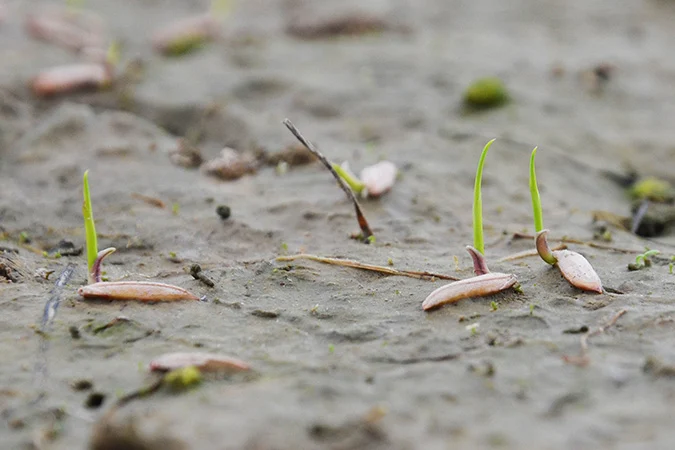Scientists have identified the beta-cyclocitral hormone that makes tomato and rice roots grow faster and branch more. Molecules as fertilizer also have an underground role in helping to grow roots faster.
Scientists report findings in the Proceedings of the National Academy of Sciences where the addition of beta-cyclocitral molecules to the soil will accelerate the growth of the roots of rice and tomatoes. Rice plants are also resistant to salty soil.
"For centuries, more attention has been paid to leaves and other properties that are easily visible. Because roots are hidden underground and have been neglected," said Philip Benfey of Duke University in Durham.
Benfey and colleagues in previous studies have suggested that some molecules that are chemically linked to carotenoids, pigments that give orange carrots, may be important. But the researchers are not sure exactly which.
Many of these carotenoid relatives have been rearranged and are commercially available as food additives or supplements. Alexandra Dickinson from Duke University tested Arabidopsis by adding each compound to the gel to make it clear where the roots grew and monitor what happened for 10 days.
"Beta-cyclocitral stands out," Dickinson said.
Roots grow faster and also branch more and the same effect occurs in rice and tomatoes. Rice plants can also live in salty soil. Untreated rice plants are very unhappy with the level of salt, but the addition of beta-cyclocitral makes the plants undisturbed.
It is likely that the compound helps the roots push down through salty soil layers to reach deeper and less salty soils. The researchers hope that beta-cyclocitral can be added to the soil or sprayed onto plants and encourage root growth in wider plants.
Journal : Alexandra J. Dickinson et al. β-Cyclocitral is a conserved root growth regulator, PNAS, May 8, 2019, DOI:10.1073/pnas.1821445116
Scientists report findings in the Proceedings of the National Academy of Sciences where the addition of beta-cyclocitral molecules to the soil will accelerate the growth of the roots of rice and tomatoes. Rice plants are also resistant to salty soil.
"For centuries, more attention has been paid to leaves and other properties that are easily visible. Because roots are hidden underground and have been neglected," said Philip Benfey of Duke University in Durham.
Benfey and colleagues in previous studies have suggested that some molecules that are chemically linked to carotenoids, pigments that give orange carrots, may be important. But the researchers are not sure exactly which.
Many of these carotenoid relatives have been rearranged and are commercially available as food additives or supplements. Alexandra Dickinson from Duke University tested Arabidopsis by adding each compound to the gel to make it clear where the roots grew and monitor what happened for 10 days.
"Beta-cyclocitral stands out," Dickinson said.
Roots grow faster and also branch more and the same effect occurs in rice and tomatoes. Rice plants can also live in salty soil. Untreated rice plants are very unhappy with the level of salt, but the addition of beta-cyclocitral makes the plants undisturbed.
It is likely that the compound helps the roots push down through salty soil layers to reach deeper and less salty soils. The researchers hope that beta-cyclocitral can be added to the soil or sprayed onto plants and encourage root growth in wider plants.
Journal : Alexandra J. Dickinson et al. β-Cyclocitral is a conserved root growth regulator, PNAS, May 8, 2019, DOI:10.1073/pnas.1821445116
